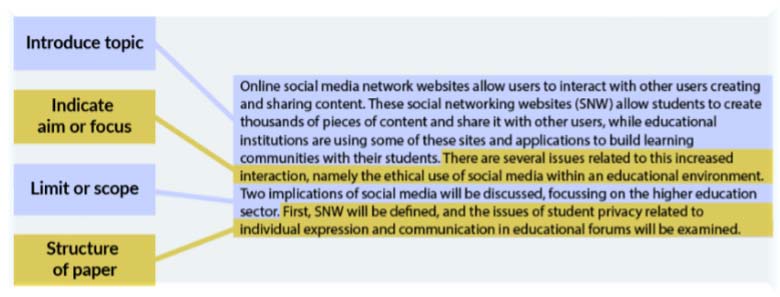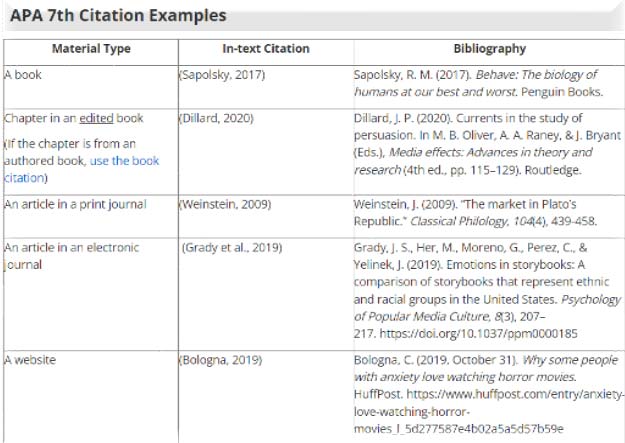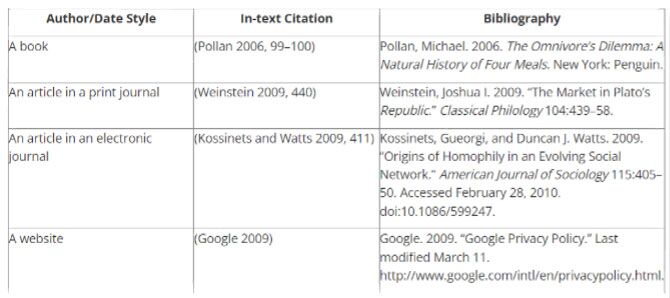Often teachers give assignments to their students to test their understanding of the material and their ability to express themselves clearly and concisely. But not all students succeed in doing that. So, if you are one of those unlucky students who couldn’t get the required grades in previous assignments, this blog post is for you. Here, we’ll share five practical tips to help you write a top-notch assignment.
5 Effective Tips for Perfect Assignment Writing for Students
An assignment aims to test your understanding of the material. But you can only convey your knowledge better if you know how to write a perfect assignment. So, if perfect assignment writing sounds like a daunting task to you, then use the following tips:
1. Start With a Good Introduction
Whenever you start a conversation, you introduce yourself first. Therefore, you should begin writing your assignment with the same approach.
The introduction of an assignment sets its tone. So, it must be engaging. However, creating a compelling introduction is easier said than done. So, consider the following points while writing an assignment’s introduction:
- Include key arguments.
- Add a bit of context by discussing some pieces of background information.
- Discuss the key issues related to your topic and how you plan to answer them in your assignment.
Let’s see how Griffith University writes a compelling introduction by practically implementing the above-discussed points (University).

As you can see in the above picture, the writer informs the readers about the assignment’s scope, aim and structure. So, that’s how you can shape your assignment’s introduction. But remember to keep the introduction as concise and captivating as possible because its goal is to hook the readers and catch their attention quickly.
2. Structure the Body With Some Supporting Evidence
A well-written introduction is like a promise because it makes a commitment to the readers about the information they will find in a writing piece. And when it comes to keeping that promise, the body of a writing piece plays its role. Therefore, tip number two for writing a good assignment is to structure the body of your topic with proper evidence.
The introduction might be the most crucial part of an assignment because it catches the readers’ attention. But the body is the main part of an assignment, as it holds 60-80% of weightage. In fact, the grade you obtain in a paper mostly depends on the content of the body part. Therefore, it must contain all the necessary information to help you score an A.
The length of the body part varies according to the nature of the topic. But a general rule of thumb is to follow the same structure for each paragraph of the body part. So, take assistance from the following assignment format while writing the content for its body part:
- Introduce each paragraph in the body with an argument or idea. And for discussing an idea, you can take assistance from a topic or focus sentence because it clarifies the purpose of a paragraph.
- Always support the discussed argument (or idea) with relevant evidence. And for that, you can take assistance from examples, facts and statistics.
Here is an example of how ThoughtCo writes a perfect paragraph with the help of a topic sentence and relevant evidence (Nordquist, 2007):

Moving on , there are different ways of adding examples, facts and statistics. For instance, you can use infographics, pictures, tables, graphs, charts, or other data representation forms to support the evidence in an assignment. However, if you are using some information from an existing source, it is essential to give credit to the owner of that source. Otherwise, the material of your assignment will become plagiarized.
Note: See the last tip of this guide to get more information regarding citing sources.
3. Use Short Sentences and Easy-to-Read Wording
Discussing arguments and relevant evidence are not enough to make a top-notch assignment. That’s because the content of the assignment must be easy to skim through. And using short sentences and easy-to-read wording is the best way to write such content, which is the third tip of this guide.
Students often think that good content is one with a fancy vocabulary. But that’s not the case. In fact, readers get distracted when they have to specifically search for the meaning of a word while reading the content. So, to prevent that from happening, you can write the content of your assignment using short sentences and easy-to-read wording.
However, using short sentences and easy-to-read wording should not impact the formal writing tone of an assignment. Otherwise, your instructor won’t hesitate to give you a bad grade on your work. So, the goal is to write the assignment in an academic tone without using complex vocabulary.
But sometimes, writer’s block can stop the flow of creative juices, which makes it challenging to write properly. Even professional writers face this issue.
A good way to end writer’s block is to use online AI-based tools. Paraphrasing tools in particular can be helpful in this situation. How? Since paraphrasing tools reword the input text and give it a new look, it can give you new and fresh ideas about how you can start writing.
To explain this better, let’s take a look at an example. We’ll use two different tools for the example.
First, we’ll take a sample text with long sentences and complicated vocabulary here.
Sample Text: The manifold intricacies of the human condition are often overlooked in contemporary discourse, as the proclivity for simplicity and instant gratification has led to a paucity of nuanced understanding. The proliferation of technology and the subsequent atomization of society has exacerbated this trend, as the ability to curate one’s own information has led to the entrenchment of cognitive biases and the erosion of empathic faculties.
Then, we’ll run the ‘Sample Text’ into the aforementioned AI paraphrasing tools. So, after running the sample text into the tools mentioned above, we’ve got the following outputs:

The output of Quillbot AI paraphrasing tool

The output of Paraphraser.io AI paraphrasing tool
As you can see in the above pictures, both tools have converted the vocabulary to easy wording and worked on the sentences’ length. You can get inspiration by looking at the output given by the tools and then start writing your own stuff from a new angle.
4. Sign-Off With a Strong Conclusion
Generally, students put all their efforts into writing an assignment’s introduction and body parts. However, when writing conclusive remarks about their work, students either leave it empty or write an irrelevant conclusion. And that’s where they miss the trick.
Just like the introduction and body, having a strong conclusion is another vital aspect of a perfectly written assignment. In fact, when instructors are in a hurry, they only focus on the conclusion part of an assignment. Therefore, it is essential to include a perfect conclusion. And here are some tips you can use to write an ideal conclusion:
- A strong or perfect conclusion summarizes a topic’s main arguments based on your key takeaways.
- Although you can highlight the areas that need further research while writing a conclusion, you must refrain from introducing any new concepts.
Thus, you can add concluding remarks to your assignment using the above-mentioned vital factors. But if you want a helping hand in summarizing the essential ideas of your assignment, you can use an AI-based summary generator.
Many tools are available for generating a summary through technical assistance. But not all of them work on cutting-edge technology. And that’s why some tools often generate irrelevant outputs.
Considering the above, we personally recommend using Summarizer.org for creating summaries. Since this tool is equipped with AI, it can create smart summaries from the input text. Let’s give you an example using the same sample text that we used above.

The output of Summarizer.org’s text summarizer
5. Properly Cite the References Where Needed
Nobody knows everything. In fact, even your instructors don’t know everything. Therefore, the last tip for writing a perfect assignment is to give credit where due. And you can do that by citing the sources.
In an academic paper, it is essential to reference the sources used to create the content properly. This practice allows for transparency and will enable readers to easily trace the origin of the data and authenticate it for themselves. So, you should not skip this part.
When it comes to citing the sources, there are a few things you should understand:
- Any statement that represents common knowledge will not need a citation.
- Anything (included from an existing source) other than common knowledge will require proper acknowledgment.
When it comes to acknowledging the sources correctly, you must choose a proper citation style, as there are different styles available. But let’s briefly discuss the pattern of the most common citation styles here (Pittsburgh, 2010):
1. APA (American Psychology Association)
If you want to cite the reference in the APA style, here is the styling guideline of the 7th edition of APA:

2. Chicago
Suppose Chicago is the required citation style in your assignment. In such a situation, you can take assistance from the following patterns to cite your references in the Chicago style:

3. MLA (Modern Language Association)
The following picture will guide you regarding the styling pattern of the MLA (8th edition) citation style:

Since each institute has its own citation policy, we recommend reading the requirements carefully before writing an assignment. This way, you can identify the required citation style. However, if no citation style is specified in the requirements, you can ask your instructor because it’s better to be safe than sorry.
Thus, after identifying the required citation style, cite all the references in your assignment according to that style. Otherwise, you’ll end up losing your grades.
Conclusion
Writing a good assignment is challenging because it involves several pre-writing, actual writing and post-writing tips. But you can achieve this task more effectively by only focusing on understanding the assignment prompt, planning your work, using formal and easy-to-read language, using evidence to support your claims and proofreading your work. So, read the above discussion to learn the implementation of these tips with examples.
Thus, by following the above-discussed tips and putting in the necessary effort, you can write assignments that will impress your teachers and earn good grades. Remember that practice makes perfect. So, don’t be discouraged if you don’t get it right the first time. Keep working on your academic writing skills and you will see the improvement over time.
References:
- Nordquist, R. (2007, February 12, 2020). What Is a Topic Sentence? ThoughtCo. https://www.thoughtco.com/topic-sentence-composition-1692551
- Pittsburgh, U. o. (2010, October 11, 2022). Citation Styles: APA, MLA, Chicago, Turabian, IEEE. University of Pittsburgh. https://pitt.libguides.com/citationhelp
- University, G. Structure Assignments. Griffith University. https://www.griffith.edu.au/library/study/write-assignments/structure




